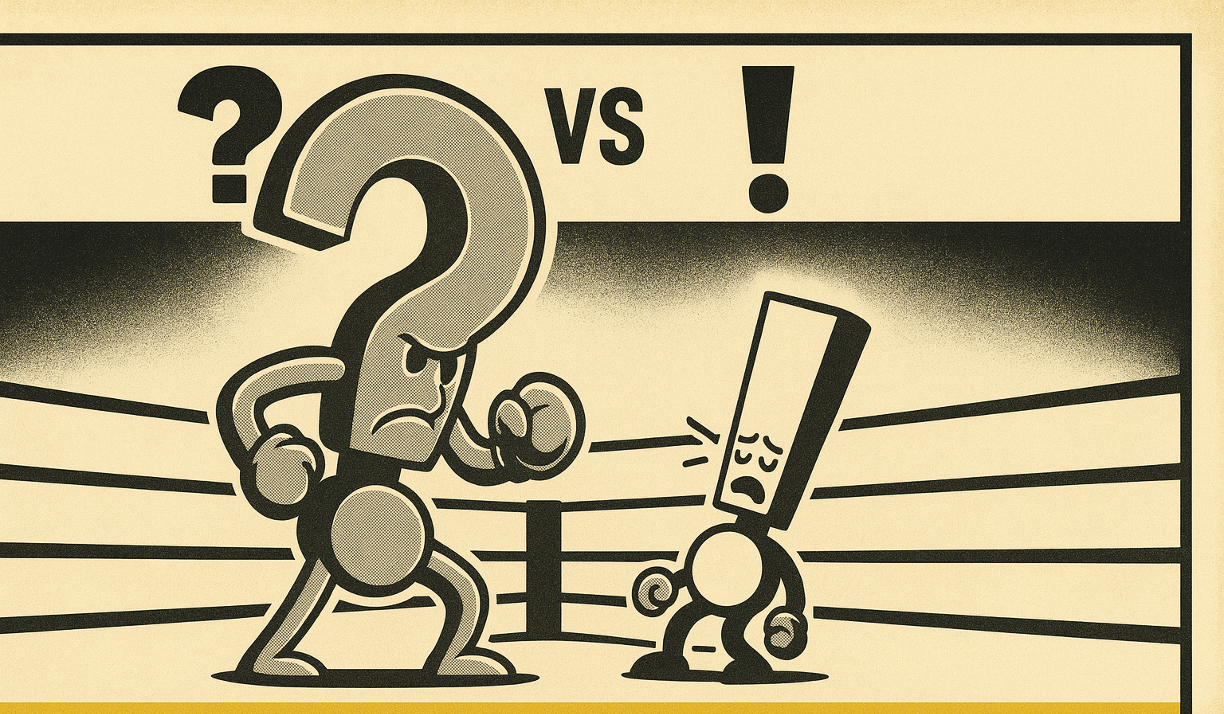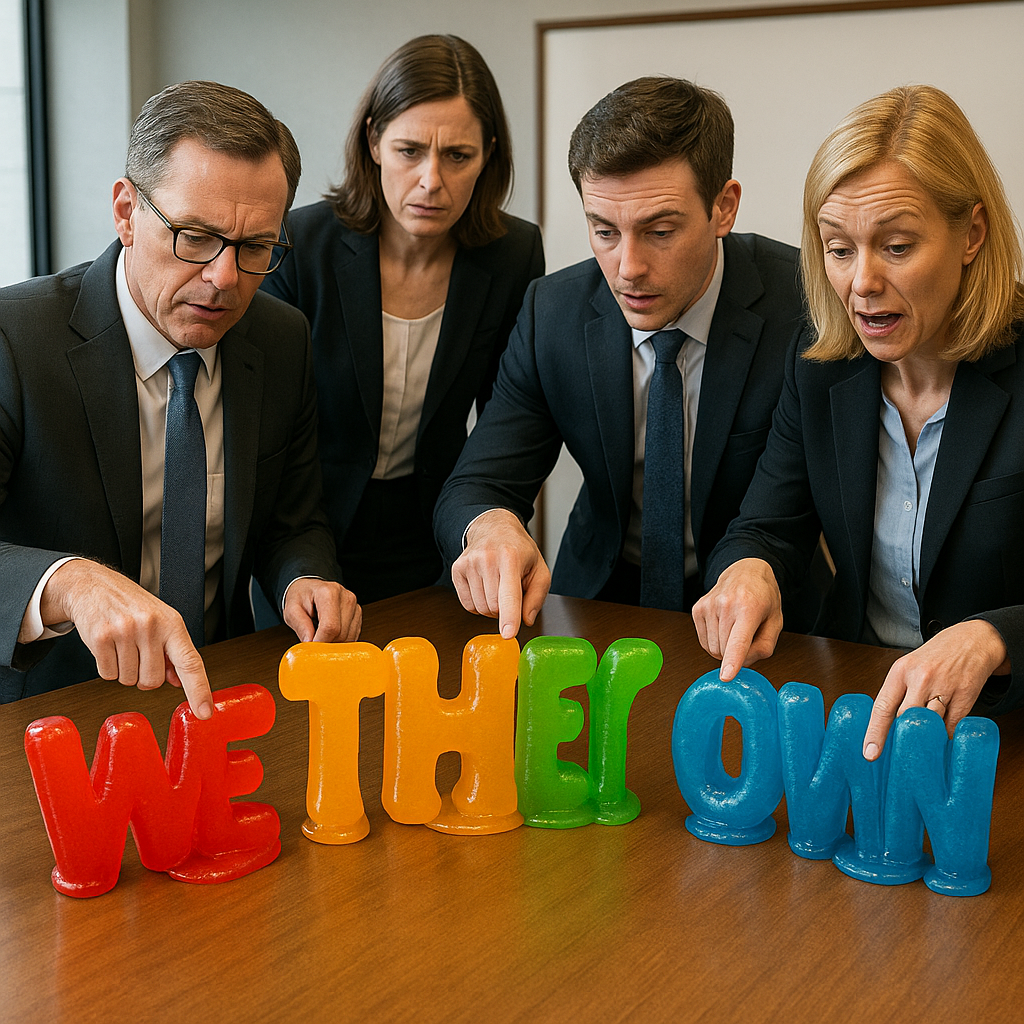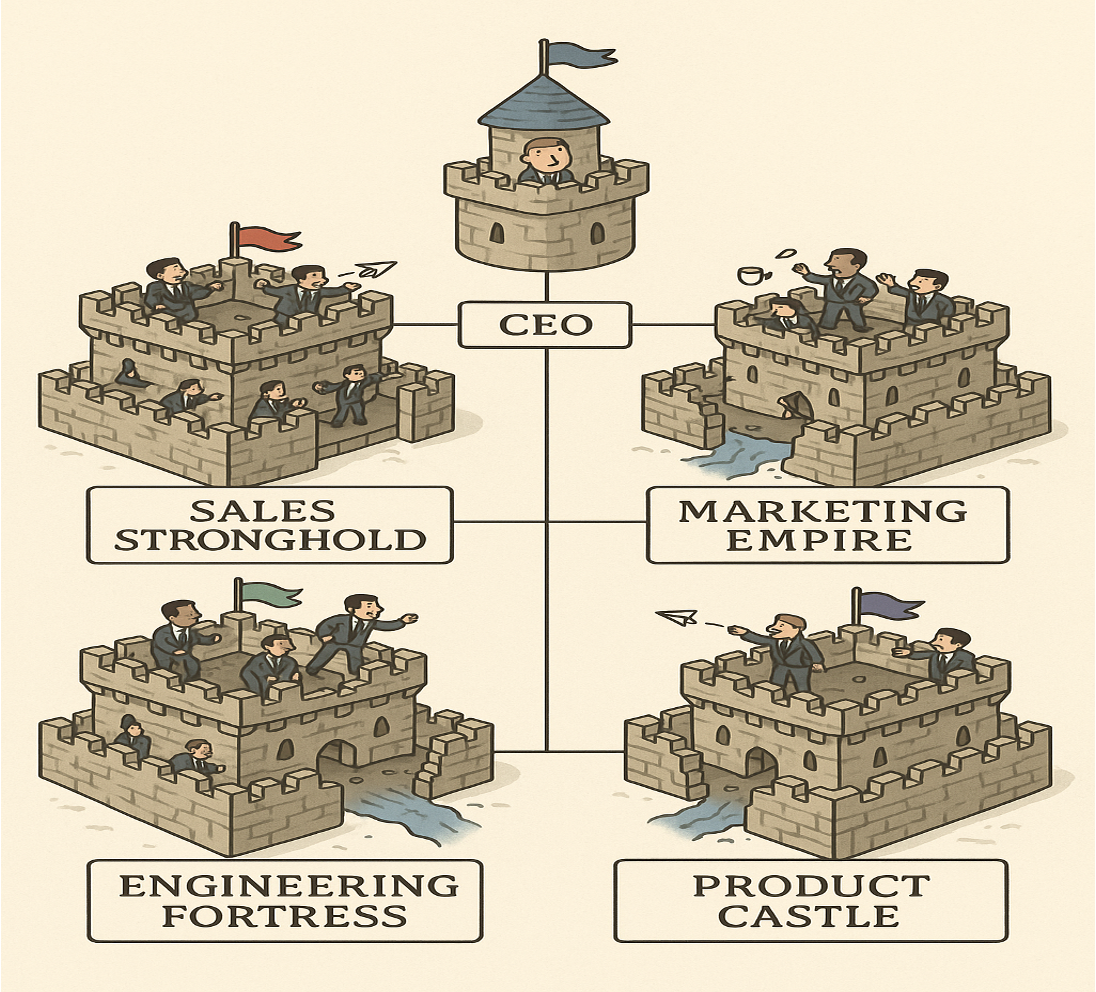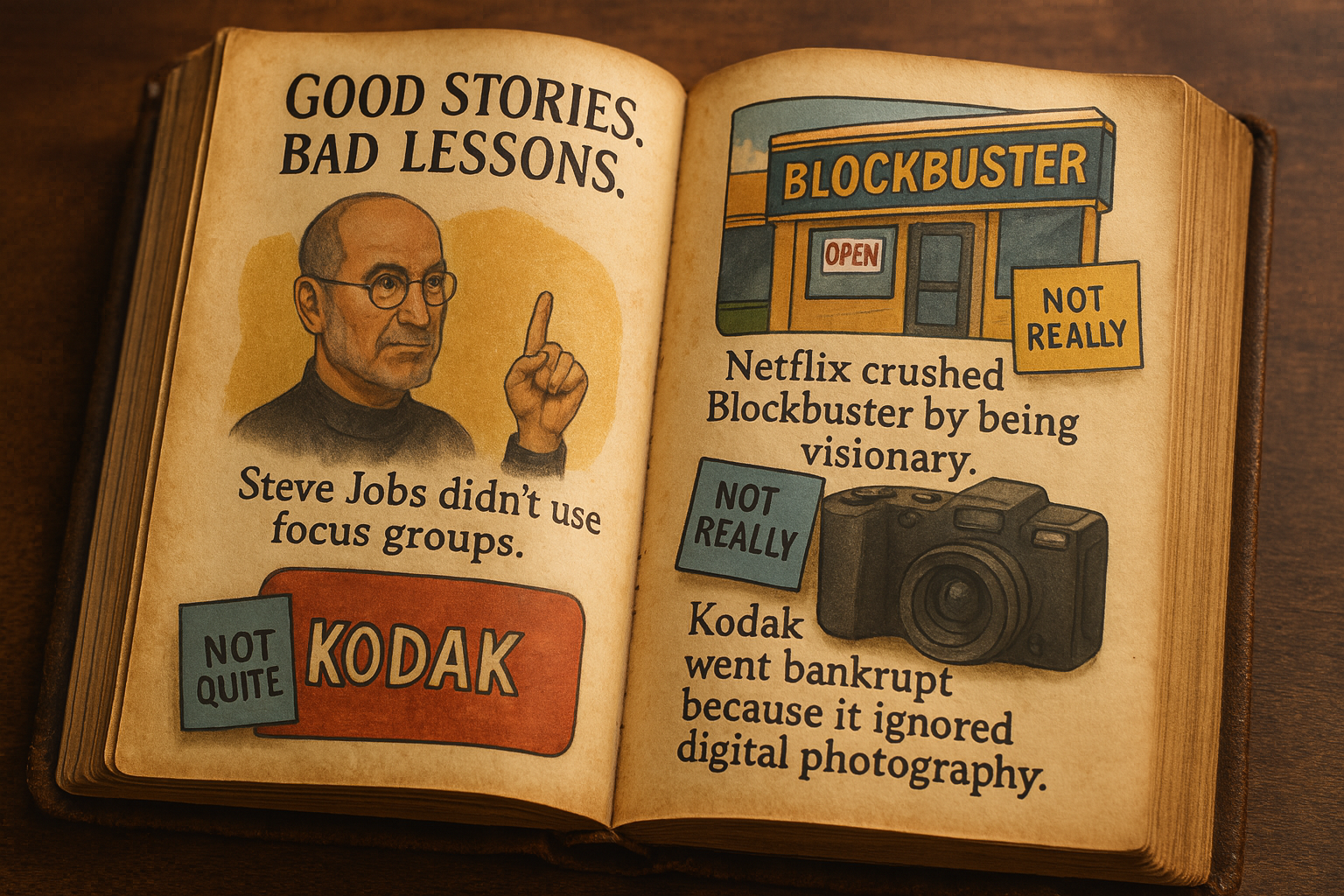Welcome to Musings—
A space where we cut through the noise and get to the heart of effective leadership and strategy execution. Here, we share hard-earned insights, practical frameworks, and candid reflections to help you navigate the complexities of leading teams and driving change.
Each post is designed to be a quick, impactful read—something you can digest between meetings and apply immediately. Whether you're refining your leadership approach, tackling execution challenges, or seeking to foster a more cohesive team, you'll find valuable takeaways here.
Dive in, reflect, and let's grow together.
The Car Nobody Wanted: How Ford Lost $2 Billion
For eighteen months, Ford built the suspense.
The Edsel would be revolutionary—the car of the future. Dealers clamored for allocation. Customers waited to see what Ford had been hiding.
Then, in September 1957, the curtain lifted.
Within three years, the Edsel was dead, leaving losses that totaled more than $2 billion in today’s dollars.
Less Room. Better Work.
When everything feels open and comfortable, progress slows. Urgency fades away. Teams stretch work instead of tightening it.
Constraints do the opposite. They create tension. They sharpen decisions. They force us to focus on what actually matters instead of spreading effort across everything that could matter.
If you want breakthroughs, don’t give people (or yourself) more space.
Say Less. Mean More.
The hardest part of communicating anything isn’t deciding what to say. It’s deciding what not to say.
Clear communication is a discipline. It means resisting the urge to add, even when adding feels helpful. It means stripping the message down to the parts that actually guide action and letting the rest go.
The Strategic Power of a Well-Chosen Metaphor
We humans aren’t good at taking in lots of completely new information. Metaphors lighten the load and speed up clarity. They pin new ideas to something people already understand so they can act on them faster.
The Illusion of Alignment
Alignment isn’t everyone nodding in agreement. You can’t determine alignment with a yes or no question. Alignment runs too deep for that.
True alignment is when everyone making the same decision when you’re not in the room.
When alignment isn’t real, the cracks show up fast.
Why “?” Beats “!”
An emphatic statement tells. A question invites.
And that small mark of punctuation often determines whether teams react or reflect.
Statements drive activity. Questions drive accountability.
Stop Mistaking Financial Targets for Objectives
The Problem: Scoreboards don’t create clarity
A target tells you what outcome you want, but not what you must become or improve to achieve it.
Yes, teams can act on “grow revenue.” But those actions will fragment—each group doing what makes sense in their lane. One team discounts. Another raises prices. Marketing adds promos. Ops tightens costs.
Everyone’s rowing, but not in the same direction.
The Tyranny of the Urgent
“Time keeps on slippin’, slippin’, slippin’ into the future…”
Some days it feels like Steve Miller was singing about my calendar.
I’ll start the morning with clarity about what really matters. Then the little things show up—emails that “just need a quick reply,” meetings that expand beyond their purpose, texts that break my focus. One after another, they eat away at my day.
We Experience What We Expect
Did you know the placebo effect is active in your brain every single day, not just in hospitals or clinical trials?
Psychologists call it Expectancy Theory, and it shows that the reality we experience is driven by our expectations.
The Cost of Nice, the Power of Kind
Nice is a trap. Kind is a catalyst.
At first glance, nice and kind sound like synonyms. But when coaching a team through execution, they couldn’t be further apart.
Too Fast to Be Right
The moment a suggested solution hits the table, people pile on. Options multiply. Debates fire up. Pretty soon you’ve got a full menu of alternatives, but very little clarity on whether any of them fit the situation.
What usually gets skipped is the boring alignment on the fundamentals:
Squishy Words Are the Death of Clarity
The words that sink execution aren’t the fancy bits of jargon. They’re the everyday shortcuts—the words so common that nobody notices how vague those words are.
Squishy words leave a trail of misunderstandings, false assumptions, and dropped balls.
Why Every Org Chart Creates Enemies (And How to Fix It)
Every time you draw an org chart, you're picking sides in battles that haven't started yet.
That's just human wiring. Social identity theory shows people quickly form in-groups and out-groups, even on trivial distinctions. Any structure you choose will naturally create "us vs. them" dynamics.
Without intentional design, you get the classic blame cycles: Sales says Marketing sends bad leads, Marketing says Sales doesn't follow up, and Engineering blames both teams for changing requirements mid-sprint.
But you can architect your organization so those tribal instincts work for you instead of against you. Here's how:
Delegate the How
When you’re accountable for the outcome, letting go of the “how” feels risky.
If the team takes a wrong turn or misses a date, you’ll be the one explaining.
Still, trying to own every move will burn you out, disenfranchise your team, and likely leave better solutions undiscovered. Instead, define the destination; they determine the path to get there.
Good Stories. Bad Lessons.
Scroll LinkedIn long enough and you’ll see the usual suspects:
Posts claiming Steve Jobs didn’t believe in market research.
That Netflix beat Blockbuster because they had more vision.
That Kodak went bankrupt because it ignored digital photography.
They make for great click bait. Visionaries as heroes, analysts as villains. The punchline is always the same: one bold idea is all it takes. What’s missing is the part that actually determines who wins — execution.
Let’s take them one at a time.
Why Great Teams Win One Play at a Time
With (American) football season right around the corner, I’ve been revisiting some of my highlights from former 49ers coach Bill Walsh’s excellent book, The Score Takes Care of Itself. It’s packed with leadership insights that reach well beyond the field.
One section in particular stands out, especially for those of us thinking about how to build and lead effective teams. It’s called Establishing Your Standard of Performance, and the rules are pretty darn good:
Matching the A’s: The Organizational Power Couple That Should Never Divorce
There’s a mismatch in many organizations that leads to frustration, inefficiency, and that nagging “why can’t we get anything done around here?” feeling.
It’s the disconnect between Authority and Accountability.
From “AAAGH!” to Amazing: The Power of Committed Execution
Inside organizations, we get excited about clever concepts and breakthrough plans. But even brilliant strategy—without full commitment—can fall flat. A great idea, half-executed, just looks dumb. Or worse, confusing.
Strategy isn’t self-fulfilling. It needs people to bring it to life with clarity, precision, and energy. Everyone playing their part. Everyone on tempo. Everyone believing it’s worth doing right.
The Dress Test for Leadership: Why Vague Strategies Split Teams
Do you remember The Dress controversy?
Back in 2015 a washed-out photo of a striped dress split the web: half the planet saw blue-black, the rest swore it was white-gold.
I recently came across an article that explained why so many of us conclusively saw something so different. Scientists found two key drivers: (1) the photo was low quality, forcing our brain’s visual system to “repair” missing data, and (2) people’s repairs depended on the light they were used to. Regular daylight dwellers mentally subtracted bluish light and perceived white-gold; night owls tended to discount yellowish bulbs and landed on blue-black. The real split was experience-driven guesswork by the predictive brain, which constantly fills gaps with prior knowledge to keep perception running smoothly.
That same shortcut shows up whenever leaders drop a half-lit strategy note.
The Lie of ‘Priorities’: Why Focus Is a Singular Discipline
Did you know the word priority was only ever used in the singular form for hundreds of years?
It entered the English language in the 1400s and meant the very first thing—the one item that came before all others. And for the next 500 years, that’s how it stayed. Singular. Clear. Undeniable.
Then somewhere in the 20th century, we started saying “priorities.” Plural.
As if by declaring five things “most important,” we could bend time and energy to our will. It’s like claiming there were multiple winners in a race. Everyone gets a trophy, right? But that’s not how performance works. Not in competition. Not in strategy. Real focus doesn’t allow for handing out participation ribbons. It means hard choices. It declares a winner. It says: this comes first.




















